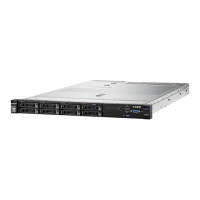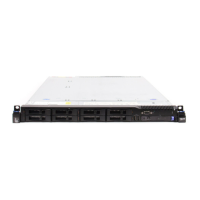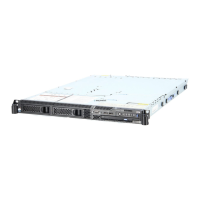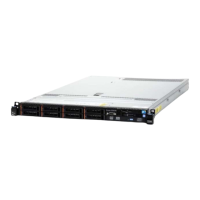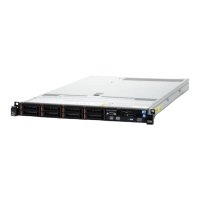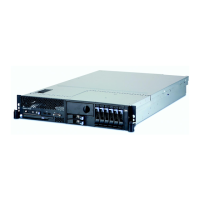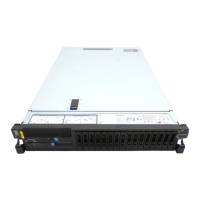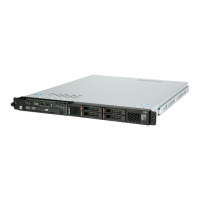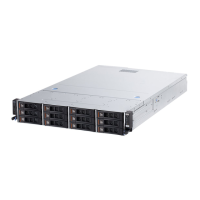v Follow the suggested actions in the order in which they are listed in the Action column until the problem
is solved.
v See Chapter 3, “Parts listing, Type 7978 and 1913 server,” on page 89 to determine which components are
customer replaceable units (CRU) and which components are field replaceable units (FRU).
v If an action step is preceded by “(Trained service technician only),” that step must be performed only by a
trained service technician.
Symptom Action
A hard disk drive that you are
installing does not fit correctly in
the cage.
Make sure that the type of drive is correct for this server (see Chapter 3, “Parts
listing, Type 7978 and 1913 server,” on page 89).
Intermittent problems
v Follow the suggested actions in the order in which they are listed in the Action column until the problem
is solved.
v See Chapter 3, “Parts listing, Type 7978 and 1913 server,” on page 89 to determine which components are
customer replaceable units (CRU) and which components are field replaceable units (FRU).
v If an action step is preceded by “(Trained service technician only),” that step must be performed only by a
trained service technician.
Symptom Action
A problem occurs only
occasionally and is difficult to
diagnose.
1. Make sure that:
v All cables and cords are connected securely to the rear of the server and
attached devices.
v There is adequate cooling airflow. Reduced airflow due to a failed fan or an
internal or external obstruction can cause the server to overheat and shut
down.
2.
Check the system-error log or BMC log (see “Error logs” on page 26).
3. See “Solving undetermined problems” on page 86.
If
the problem remains, call for service.
The server resets (restarts)
occasionally.
1. If the reset occurs during POST and the POST watchdog timer is enabled (click
Advanced Setup --> Baseboard Management Controller (BMC) Setting -->
BMC Post Watchdog in the Configuration/Setup Utility program to see the
POST watchdog setting), make sure that sufficient time is allowed in the
watchdog timeout value (BMC POST Watchdog Timeout). See the User’s
Guide for information about the settings in the Configuration/Setup Utility
program. If the server continues to reset during POST, see “POST” on page 19
and “Diagnostic programs, messages, and error codes” on page 61.
2. If the reset occurs after the operating system starts, disable any automatic
server restart (ASR) utilities, such as the IBM Automatic Server Restart IPMI
Application for Windows, or ASR devices that may be installed.
Note: ASR utilities operate as operating-system utilities and are related to the
IPMI device driver. If the reset continues to occur after the operating system
starts, the operating system might have a problem; see “Software problems” on
page 55.
3. If neither condition applies, check the system-error log or BMC log (see “Error
logs” on page 26).
If
the problem remains, call for service.
Chapter 2. Diagnostics 45

